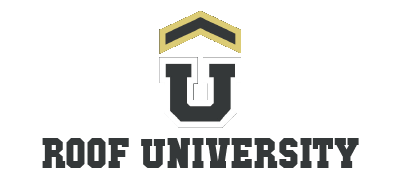Roll roofing is a cost-effective, easy-to-install roofing material commonly used for low-slope roofs and smaller structures. Made from similar materials as asphalt shingles, roll roofing provides a quick and practical solution for weatherproofing areas that require less complex roofing systems. This guide explores roll roofing, its types, advantages, installation methods, and maintenance.
What is Roll Roofing?
Roll roofing is a long, thin sheet of material made from asphalt and mineral granules, similar to asphalt shingles but in a rolled format. It comes in rolls that are typically 36 inches wide and 33 feet long, covering about 100 square feet of roof area. Roll roofing is lightweight, waterproof, and available in a variety of colors to suit different aesthetic preferences.
Common Uses of Roll Roofing
Roll roofing is often used in applications where durability and ease of installation are priorities but a traditional roof is unnecessary, such as:
- Sheds and Garages: Ideal for outbuildings and utility structures due to its simplicity and affordability.
- Porches and Carports: Provides quick coverage for secondary structures.
- Low-Slope Roofs: Suitable for roofs with a pitch between 1:12 and 4:12.
- Temporary Roofing: Frequently used as a stopgap solution until a more permanent roofing system can be installed.
Types of Roll Roofing
- Asphalt-Saturated Felt:
- Traditional material coated with asphalt for water resistance.
- Often used as an underlayment or in less demanding roofing applications.
- Mineral-Surfaced Roll Roofing:
- Features a top layer of mineral granules for added durability and UV resistance.
- Common for sheds, garages, and low-slope residential roofs.
- Smooth-Surfaced Roll Roofing:
- Used primarily as an underlayment or for temporary protection.
- Less durable than mineral-surfaced options.
- Self-Adhered Roll Roofing:
- Features a peel-and-stick backing for easy installation.
- Eliminates the need for additional adhesives or fasteners.
Advantages of Roll Roofing
- Cost-Effective:
- One of the most affordable roofing materials available.
- Easy Installation:
- Simple to install with basic tools, making it suitable for DIY projects.
- Lightweight:
- Puts less strain on the roof structure compared to heavier materials.
- Quick Application:
- Ideal for small or secondary structures where time is a factor.
- Weatherproofing:
- Provides an effective barrier against rain and snow.
Disadvantages of Roll Roofing
- Short Lifespan:
- Typically lasts 5 to 10 years, depending on the quality and climate.
- Limited Aesthetic Appeal:
- Lacks the dimensional appearance of shingles or tiles, making it less visually appealing for primary residences.
- Prone to Damage:
- Vulnerable to tearing, punctures, and cracking, especially in extreme weather conditions.
- Not Suitable for Steep Slopes:
- Designed specifically for low-slope applications and may fail on steeper roofs.
Installation Methods
- Preparation:
- Clean the roof deck thoroughly and ensure it is smooth and free of debris.
- Apply a layer of roofing underlayment if required.
- Positioning:
- Unroll the material and cut it to the appropriate length, leaving enough overlap at seams.
- Fastening:
- Use roofing nails or adhesive to secure the roll roofing to the roof deck.
- Ensure proper overlap between rows to create a watertight seal.
- Sealing:
- Apply roofing cement along the edges and seams for additional waterproofing.
- Final Touches:
- Trim any excess material and inspect the installation for gaps or loose sections.
Maintenance Tips for Roll Roofing
- Inspect Regularly:
- Check for tears, cracks, or areas where the material may be lifting.
- Repair Promptly:
- Use roofing cement or patches to fix small damages and prevent leaks.
- Clean Debris:
- Remove leaves, dirt, and other debris that can trap moisture and degrade the material.
- Ensure Proper Drainage:
- Clear gutters and downspouts to prevent water pooling on the roof.
When to Choose Roll Roofing
Roll roofing is best suited for:
- Temporary roofing solutions.
- Small-scale projects like sheds, garages, or workshops.
- Low-slope roofs that don’t require a high-end aesthetic.
Conclusion
Roll roofing is a practical and budget-friendly option for low-slope roofs and secondary structures. While it may not have the lifespan or visual appeal of more permanent roofing solutions, its ease of installation and affordability make it a valuable choice for specific applications. Proper installation and regular maintenance can help maximize its performance and lifespan.
